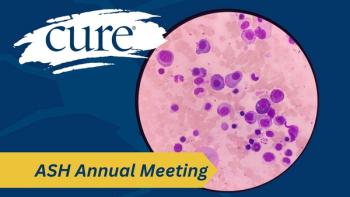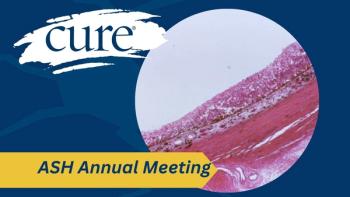Patients who had BCG-unresponsive non-muscle invasive bladder cancer (NMIBC) and were urinary minimal residual disease (uMRD)-negative after treatment of Adstiladrin (nadofaragene firadenovec) did not experience cancer recurrences, according to a phase 2 trial.
Findings from the phase 2 trial were presented in a poster at the 2024 ASCO Genitourinary Cancers Symposium.
Beyond being highly predictive of future recurrence, uMRD was also shown to enable quantitative evaluation of molecular response to Adstiladrin, according to first author Dr. Vikram M. Narayan and co-investigators. Narayan is an assistant professor in the department of urology at Emory University School of Medicine.
“uMRD profiling uses next-generation sequencing to identify mutations associated with urothelial carcinoma and can be used to predict recurrence and assess response to therapy,” Narayan and co-investigators wrote on their poster.
- Patients with a specific type of non-muscle invasive bladder cancer (NMIBC) called BCG-unresponsive, who were treated with Adstiladrin, showed no cancer recurrences if they were urinary minimal residual disease (uMRD)-negative after treatment.
- The study used a technique called uMRD profiling, which used advanced genetic analysis to identify mutations associated with the cancer, helping predict the likelihood of recurrence and assess the response to Adstiladrin therapy.
- The uMRD analysis involved 43 patients in a phase 2 trial, with urine samples collected before treatment and at three months follow-up. The primary goal of the study was to achieve high-grade recurrence-free survival at one year.
- The analysis found that patients with uMRD-negative status had significantly better recurrence-free survival rates compared to uMRD-positives, indicating the potential effectiveness of Adstiladrin in preventing cancer recurrence.
The researchers’ uMRD analysis was from the phase 2 trial that included 43 patients with BCG-unresponsive (relapsed/refractory) NMIBC treated with the novel intravesical therapy Adstiladrin. To enroll in the trial patients had to have an ECOG performance status of 2 or lower, meaning eligible patients were able to perform tasks independently. Patients with upper tract bladder cancer were not eligible.
The uMRD analysis included all patients in the trial who had been treated with at least one dose of Adstiladrin, which included 35 patients. Urine samples were collected from patients before induction and at three months follow-up.
The primary endpoint (main result measured at the end of a study to see if treatment worked) of the study was high-grade recurrence-free survival (RFS; time after primary treatment when cancer does not return) at one year.
Initial pathological stages for the 35 evaluable patients were Ta in three patients, T1 in nine patients and Tis in 23 patients. Six patients also had concomitant carcinoma in situ (CIS). For the 32 patients with pre-treatment urine samples available, the most frequently mutated genes included TP53, TERT, PIK3CA, ARID1A, PLEKHS1, ELF3 and ERBB2. CNVs occurred most in SOX4and NIT1.In both pre- and post-induction collections, “uMRD identified patients with high (72%) and low (28%) recurrence risk,” the authors wrote.
The12-month pre-induction RFS rates were 71% and 20% for MRD-negatives and MRD-positives, respectively.Also at 12 months, the post-induction RFS rates were 100% and 20% for MRD-negatives and MRD-positives, respectively.
The researchers measured quantitative drug response using pre- and post-induction urine in 15 patients and categorized patients’ MRD status as negative (7%), complete responder (13%), partial responder (27%), stable (20%) or refractory (33%).The researchers then determined a broad correlation between recurrence and response groups, with no recurrence in the MRD negative and complete responder groups and recurrence in seven of the 12 patients that comprised the other groups.
“uMRD enables quantitative assessment of molecular response to drug treatment. uMRD-determined pre-treatment disease burden assessment can support stratification of control and intervention arms in future treatment trials,” the authors wrote in their poster conclusion.
Earlier this month, Ferring Pharmaceuticals, the developer of Adstiladrin, announced that the therapy is now fully available across the United States for the treatment of adult patients with high-risk BCG-unresponsive NMIBC with CIS with or without papillary tumors. In December 2022, the FDA approved Adstiladrin for use in this patient population.
For more news on cancer updates, research and education, don’t forget to subscribe to CURE®’s newsletters here.






